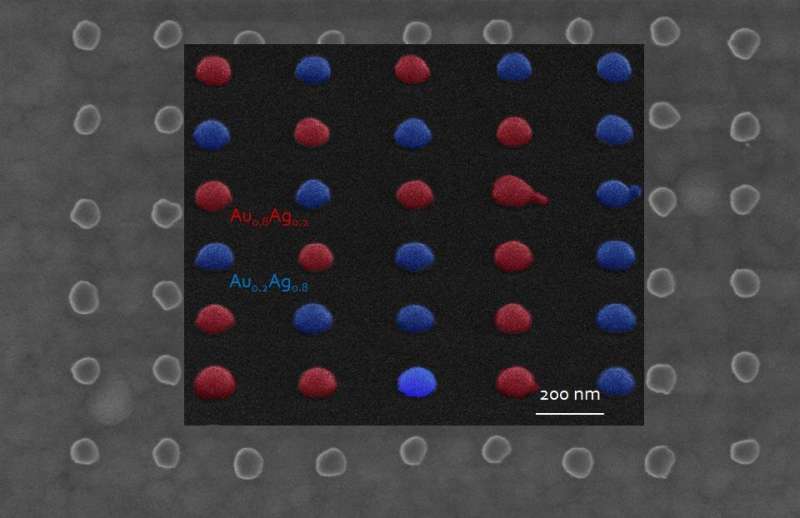Gold, silver, copper and aluminum are widely used in the manufacture of optical components because of their reflective properties. Gold, for instance, reflects red light, while silver reflects blue light.
“We realized that, by creating an alloy of gold and silver, we could combine the optical effects of both metals in a single material,” Olivier Martin, co-author of the study, said in a media statement.
Martin explained that, in addition to their role in optical components, the metals are also of interest to scientists who study them at the nanoscale, since nanostructures have a completely different optical response than bulk materials. At this scale, light interacts differently than it would with the same metal in a larger quantity, such as in a gold bar.

However, studying their nanostructures is not easy because conventional gold and silver alloys are fabricated at high temperatures of 800–1,000°C and this process alters the form of the nanostructures.
“Current annealing methods don’t maintain the structure of the two metals,” Martin said.
Thus, to get around this problem, he and his team set about developing a low-temperature annealing method that would work for any alloy mixture.
The engineers heated both metals to 300°C for eight hours, and then to 450° for a further 30 minutes, successfully producing an alloyed gold-silver thin film.
They discovered that their method maintains the structures of the two metals—and that the new material reflects the full spectral range, depending on its composition.
“Low-temperature annealing produces well-alloyed materials but doesn’t alter the form of the particles. It’s as if we’ve combined the optical properties of gold and silver. Our alloy reflects new colours,” Jeonghyeon Kim, co-author of the study, said.
The research team also experimented with different alloy ratios and noticed that the optical effects changed as they added more gold or silver to the mixture.
In Martin’s view, their method, which could be used to manufacture new optical instruments, also has more everyday applications.
“Our material could find its way onto watch and clock dials, for instance,” the researcher said.




